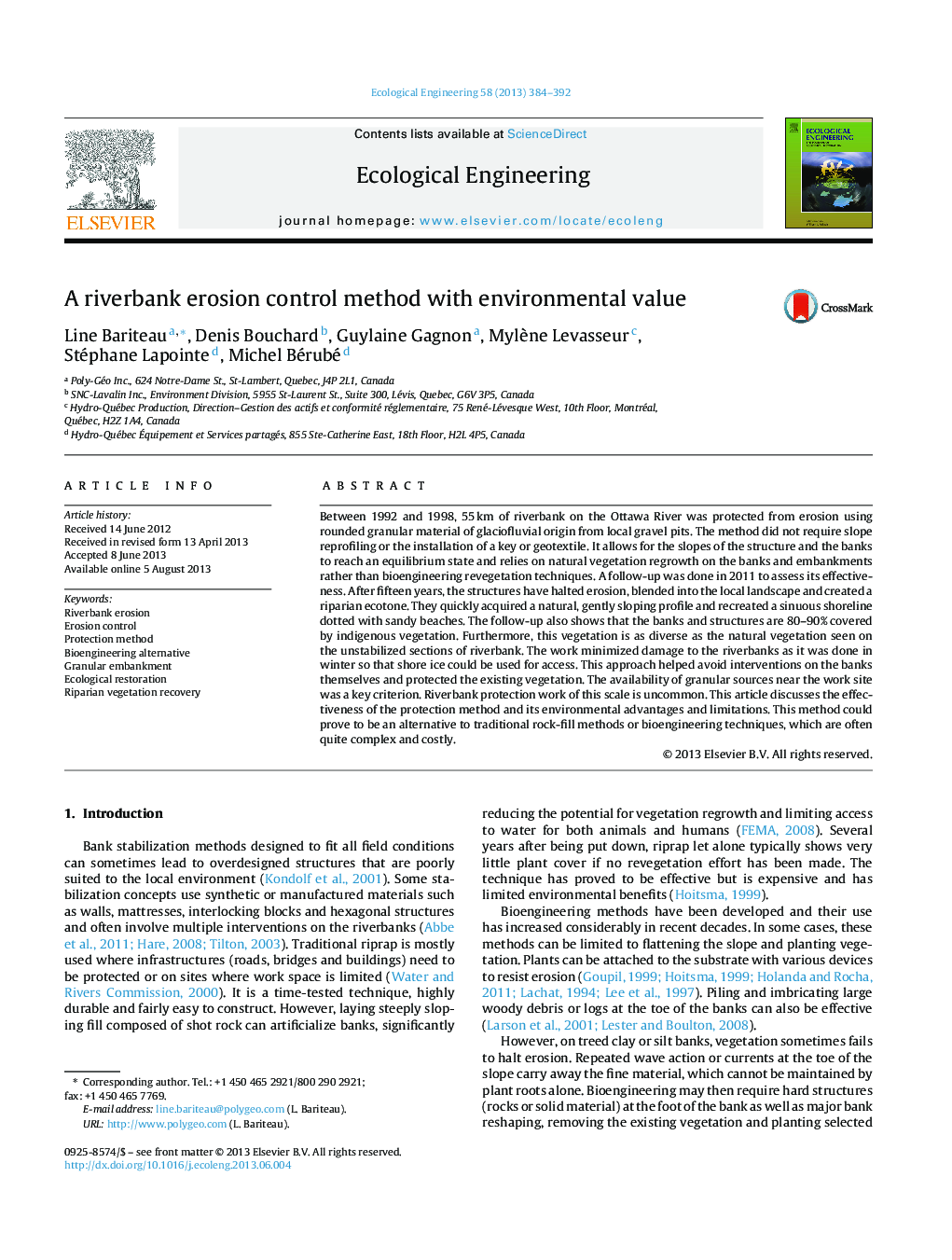| Article ID | Journal | Published Year | Pages | File Type |
|---|---|---|---|---|
| 6302559 | Ecological Engineering | 2013 | 9 Pages |
â¢Ottawa River Stabilization Program: 55 km of riverbanks protected with rounded granular embankments.â¢An alternative to riprap and bioengineering techniques.â¢A “non-interventionist” approach minimizing disturbances for residents and natural environment.â¢A long term follow up (15 years) to demonstrate erosion control.â¢A field proven method resulting in a 90% vegetation self recovery and similar plant diversity on stabilized and unstabilized riverbanks.
Between 1992 and 1998, 55Â km of riverbank on the Ottawa River was protected from erosion using rounded granular material of glaciofluvial origin from local gravel pits. The method did not require slope reprofiling or the installation of a key or geotextile. It allows for the slopes of the structure and the banks to reach an equilibrium state and relies on natural vegetation regrowth on the banks and embankments rather than bioengineering revegetation techniques. A follow-up was done in 2011 to assess its effectiveness. After fifteen years, the structures have halted erosion, blended into the local landscape and created a riparian ecotone. They quickly acquired a natural, gently sloping profile and recreated a sinuous shoreline dotted with sandy beaches. The follow-up also shows that the banks and structures are 80-90% covered by indigenous vegetation. Furthermore, this vegetation is as diverse as the natural vegetation seen on the unstabilized sections of riverbank. The work minimized damage to the riverbanks as it was done in winter so that shore ice could be used for access. This approach helped avoid interventions on the banks themselves and protected the existing vegetation. The availability of granular sources near the work site was a key criterion. Riverbank protection work of this scale is uncommon. This article discusses the effectiveness of the protection method and its environmental advantages and limitations. This method could prove to be an alternative to traditional rock-fill methods or bioengineering techniques, which are often quite complex and costly.
